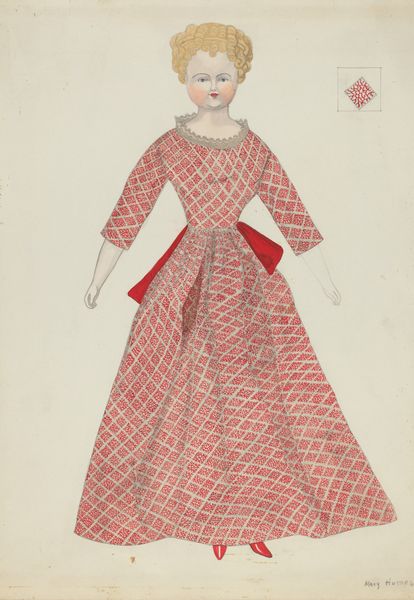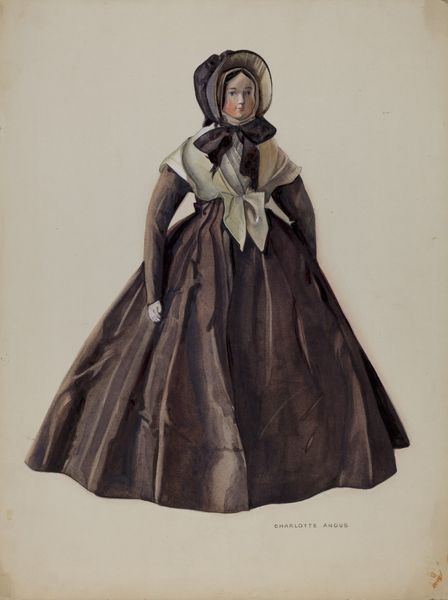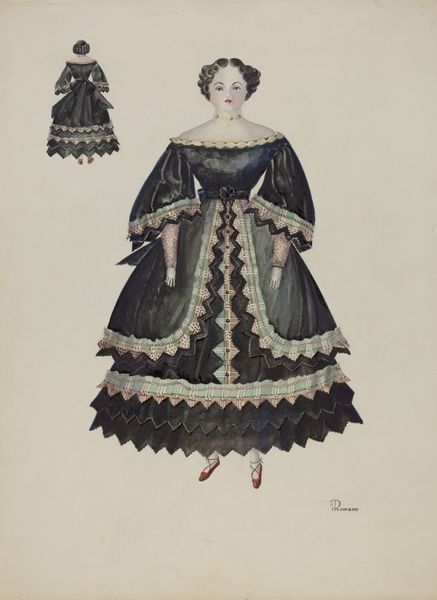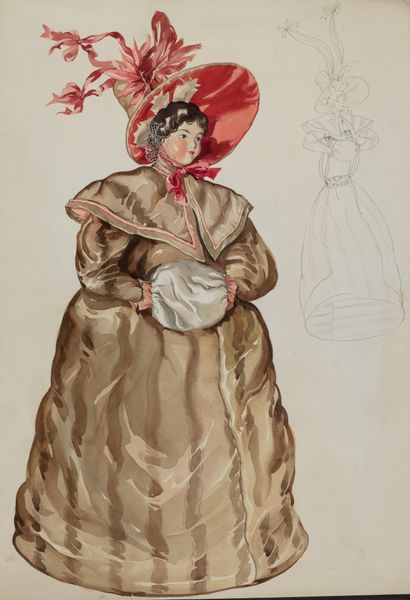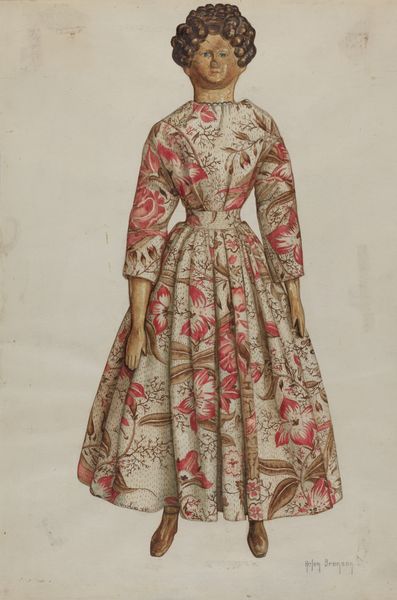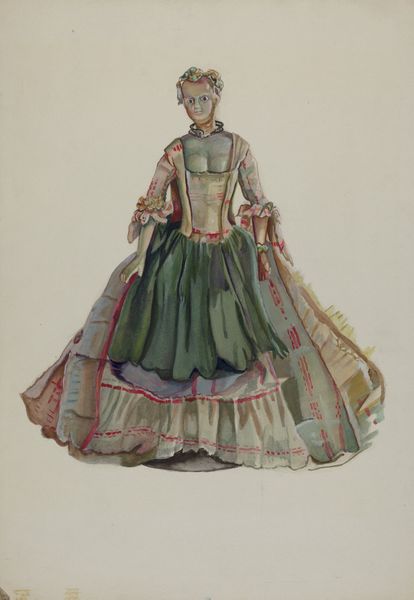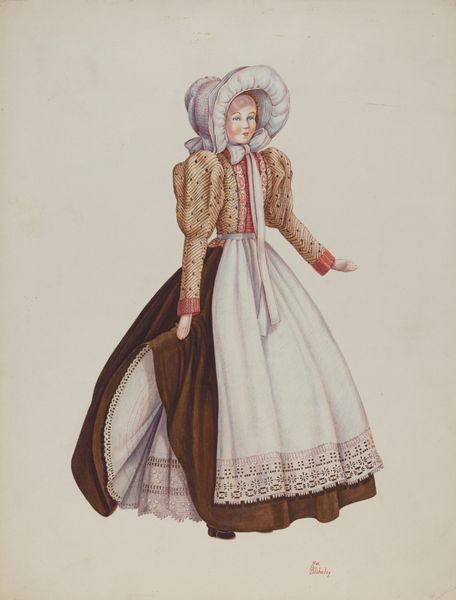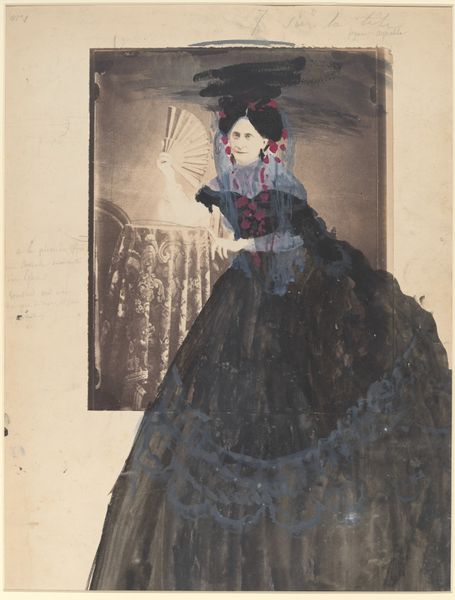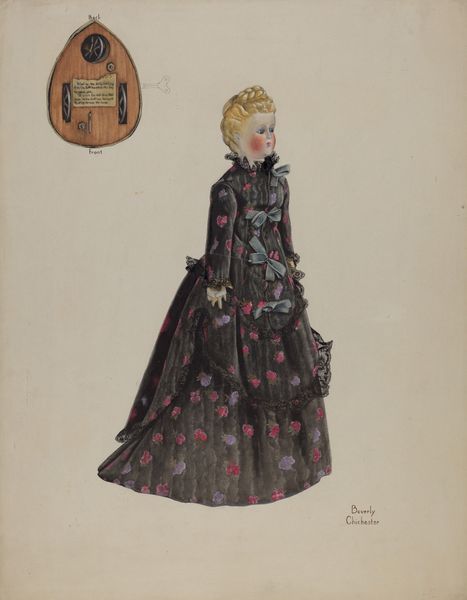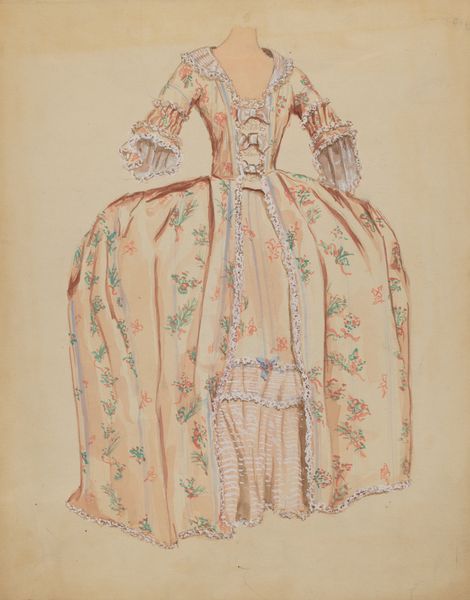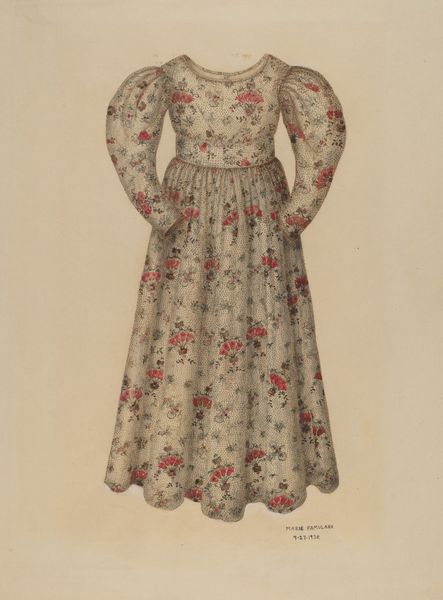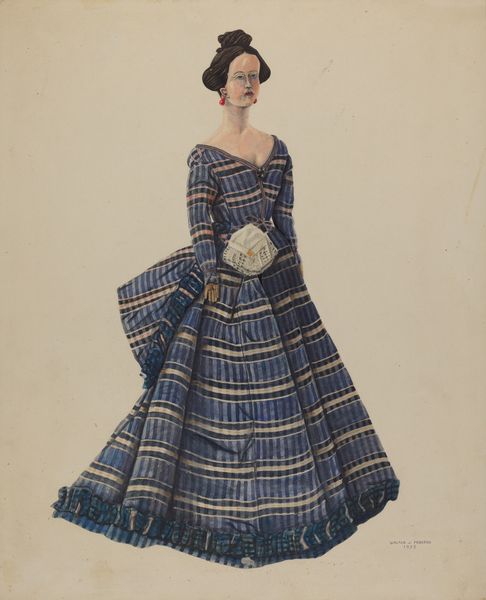
drawing, paper, watercolor, pencil
#
portrait
#
drawing
#
folk art
#
painted
#
figuration
#
paper
#
oil painting
#
watercolor
#
folk-art
#
pencil
#
watercolour illustration
#
watercolor
#
realism
Dimensions: overall: 51 x 38.1 cm (20 1/16 x 15 in.) Original IAD Object: 17" high
Copyright: National Gallery of Art: CC0 1.0
Curator: This is "Doll - Polly," a drawing by William Bos, made around 1937. What jumps out at you? Editor: The elaborate costume—it feels both incredibly detailed and oddly lifeless. There's a dissonance between the fancy textures and the doll's static, almost severe expression. Curator: You know, I think that tension is what makes it so compelling. The meticulous rendering of lace and plaid—it speaks to a real love and attention to detail. The layering of materials – the labor it suggests… Editor: Exactly. Consider the production of that lace, the cotton fields, the factories…Bos collapses high fashion and industrial labour into this image. There's this feeling of constructed artifice – you know, what materials stand in for when one is using them to try to convey a kind of societal standing. Curator: And yet, there's also something profoundly intimate about it. A portrait of a doll is a portrait of childhood, imagination... Maybe even a quiet commentary on the limitations imposed on girls, even dolls, at that time. Trapped, perhaps, inside this elaborate garment? Editor: Perhaps the construction of ‘girlhood’ via such materials...and how dolls serve in teaching little girls that. Interesting point. Bos almost certainly used watercolor and pencil on paper here. It has the precision of illustration with the gentle touch of folk art. A tension between process, subject, and cultural moment. Curator: Absolutely. There’s such an appealing accessibility to folk art – as well as in his chosen media—versus oil painting. It's unassuming yet very evocative. You could almost see a child painting that today...attempting to imbue her doll with agency. It could even speak to cultural memory now. The very materials Bos employs and meticulously renders create worlds, don't you think? Editor: Absolutely, and that final question gets us thinking about it anew. Bos’ choice of materials tells an important story on their own – a story about artistry and craft as essential as subject, or representation, in the formation of culture.
Comments
No comments
Be the first to comment and join the conversation on the ultimate creative platform.
